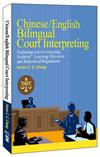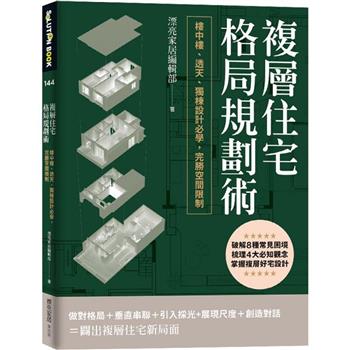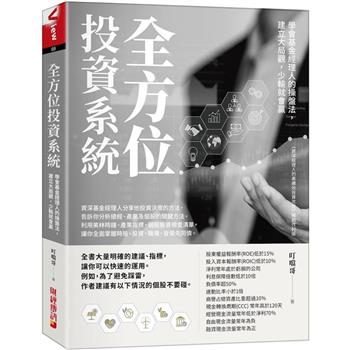圖書名稱:Chinese/English Bilingual Court Interpreting: Exploring and Investigating Students Learning Outcomes and Behavioral Regulations
This book explores and investigates students’ skill acquisition and learning progress in Court Interpreting. Focusing on the language combination of Mandarin Chinese and English, this research project has placed its emphases on two aspects: error analysis in court interpreting renditions and learners’ behavioral regulations in learning task engagement. With the identified frequently-occurred errors, two error taxonomies (into the two designated languages) are established. In addition, the examination of the students’ learning task engagement has shown when the students associated their learning in Court Interpreting with their improvement in language competence, many have become more intrinsically motivated in their learning of interpreting skills.
作者簡介:
Karen Chung-chien Chang received her Master’s degree in Translation & Interpretation from Monterey Institute of International Studies and her Ph.D. from Arizona State University, with the concentration on Linguistics, Rhetoric, and Composition. Currently, Dr. Chang is an associate professor at the FLAL Department in National Taipei University. Her research interests include translation/interpretation studies, EFL writing, learner autonomy, rhetoric, and ESP course design and implementation.
作者序
In Taiwan, the Judicial Yuan, the authority governing court systems and court practices, made the first formal attempt to recruit and train court interpreters in 2006. Since then, the discipline of court interpreting has gradually attracted some researchers’ attention. Several research topics, such as the challenges faced by those in this field, quality assessment of court interpreting, appropriate training approaches, and training materials, have surfaced in the past ten years (K. Chang, 2013, 2016, 2020; Y. L. Chen, 2018; Y. T. Chen, 2018; Chen & Chen, 2013; Tu, 2019). When observed closely, what these past studies have in common is the central idea of “the betterment of court interpreting as a practice.” When this concept is further scrutinized, the issues of “a court interpreter’s competence to facilitate a court case” and “the quality in interpreting rendition” have emerged as two major points of discussion.
In the current practice of court interpreting in Taiwan, all details about criminal cases, either the cases at the prosecutor’s office or the cases still being processed, are kept confidential with the main purpose of protecting the involved parties. That is, the court systems at all levels forbid any forms of recording or note-taking carried out by non-court-officials. Consequently, it becomes extremely difficult for those who strive to improve the quality of court interpreting as there is practically no material based on which the current training content can be improved or future training content be designed. Nevertheless, ever since the mechanism of contracted court interpreters has been put into place formally in 2008, the listed court interpreters of different language combinations have expressed the desire of receiving more linguistic and interpreting training as well as acquiring more knowledge related to legal cases.
This book compiles the implementation results of “Court Interpreting,” a course of specialized interpreting offered by a foreign language department at a public university in northern Taiwan. The students taking this course have acquired basic training in translation and interpretation (T&I). The idea of course design for Court Interpreting was first formulated in 2013 with the author’s first research project in this practice as a field. With more preparation from 2013 to 2016, the content of this course came to shape and was offered in the format of case simulation, adopting a task-based learning (TBL) approach. So far, this course has been offered three times, and the enrollment records, with an average of 30 students, have reflected the students’ high interest in this course. In the current development of court interpreting, with the court system’s need of more competent court interpreters, the learners’ need (the T&I students’ need) of acquiring different interpreting training, and the interpreting instructors’ need of knowing how to better their instructional effectiveness, the scope of this study has covered two major themes: analyzing the errors in the students’ interpreting renditions and understanding the students’ behavioral regulation styles in their engagement of the assigned learning tasks. The former hopes to provide more information regarding the learners’ weaknesses in interpreting performances, so not only the learners can know themselves better but also the instructor will be able to keep improving her teaching methods and materials. The latter hopes to reveal more about the factors that drive these learners’ participation and engagement in the course of Court Interpreting. From these participating student-interpreters’ learning beliefs, attitudes, and behavioral regulation styles, more can be learned about the elements that motivate these students in their acquisition of legal knowledge and interpreting skills. With such information in hand, more effort can be invested in training the talents needed in the field of court interpreting.
In Taiwan, the Judicial Yuan, the authority governing court systems and court practices, made the first formal attempt to recruit and train court interpreters in 2006. Since then, the discipline of court interpreting has gradually attracted some researchers’ attention. Several research topics, such as the challenges faced by those in this field, quality assessment of court interpreting, appropriate training approaches, and training materials, have surfaced in the past ten years (K. Chang, 2013,...
目錄
Tables and Figures
Preface
Acknowledgements
1. Introduction
2. Literature Review
2.1 Court Interpreting: Learning from Other Countries
2.1.1 Interpreting quality and interpretation analysis
2.1.2 Court interpreting in Taiwan
2.2 A Brief Review on Error Analysis (EA)
2.3 Error Analyses on Mandarin Chinese and English as the Language Combination for Translation and Interpretation
2.3.1 Examining some past error taxonomies (Chinese/English translation and EFL writing)
2.4 From Learner Beliefs to Self-Regulation and Autonomous Learning
2.4.1 Learner beliefs
2.4.2 Self-determination theory (SDT) and learner motivation
2.4.3 Important factors moving motivation from extrinsic to intrinsic
3. Study Design and Procedures
3.1 Participants
3.2 Settings
3.3 Data Collection Tools
3.3.1 Rendition transcripts
3.3.2 Learning survey
3.3.3 Interview
3.4 Data Analysis Methods
3.4.1 Data analysis procedures for RQ1, RQ2 and RQ3
3.4.2 Data analysis procedures for RQ4 and RQ5
4. Findings and Discussion
4.1 RQ1: Frequently-Occurred Error Types in English-to-Chinese Renditions
4.1.1 Misinterpretation (EC1)
4.1.2 Vagueness in expressions (EC2)
4.1.3 Incorrect sentence structure (EC3)
4.2 RQ2: Frequently-Occurred Error Types in Chinese-to-English Renditions
4.2.1 Errors at the lexical level
4.2.2 Errors at the syntactic level
4.3 RQ3: Insight Gained from Interview Questions on Error Analysis
4.4 RQ4: Students’ Learning Beliefs and Attitudes on the Assigned Tasks
4.5 RQ5: Students’ Performances in Error Identification/Correction and their RAI Levels
4.5.1 Insight from the interviews on the students’ learning gains
5. Conclusions, Pedagogical Implications and Future Studies
References
Appendices
Tables and Figures
Preface
Acknowledgements
1. Introduction
2. Literature Review
2.1 Court Interpreting: Learning from Other Countries
2.1.1 Interpreting quality and interpretation analysis
2.1.2 Court interpreting in Taiwan
2.2 A Brief Review on Error Analysis (EA)
2.3 Error Analyses on Mandarin Chinese and English as the Language Combination for Translation and Interpretation
2.3.1 Examining some past error taxonomies (Chinese/English translation and EFL w...











